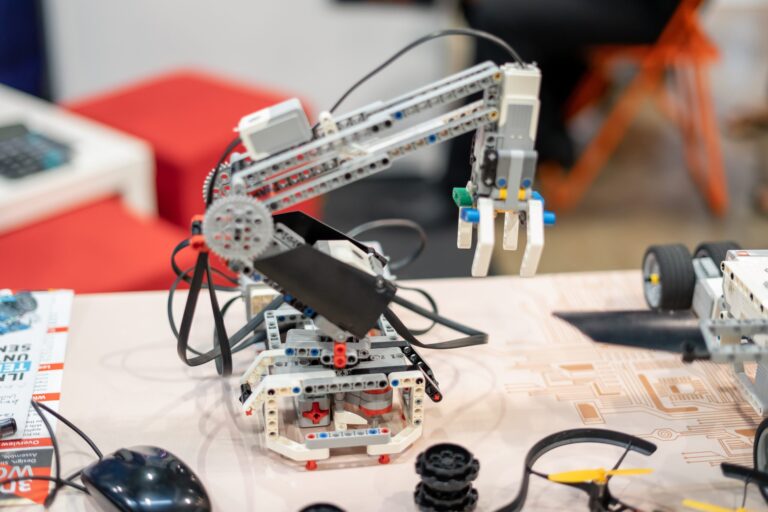How CMP is Transforming SiC Wafer Production: Reducing Costs and Enhancing Efficiency!
In the rapidly advancing field of electronics, Silicon Carbide (SiC) wafers have become essential for power electronics, electric vehicles, renewable energy systems, and other high-performance applications. With the increasing demand for these wafers, the need for more cost-effective and efficient manufacturing processes is also on the rise. Chemical-Mechanical Planarization (CMP) has emerged as a particularly effective technique in addressing these challenges. In this blog, we’ll explore how CMP is transforming SiC wafer production by cutting costs and boosting efficiency.

Understanding SiC Wafer Production
SiC wafers are highly valued for their outstanding electrical properties, making them perfect for applications demanding high efficiency, excellent thermal conductivity, and robust durability. However, producing top-quality SiC wafers is a challenging endeavor. The manufacturing process is intricate, requiring careful control over multiple steps to ensure the final product adheres to strict industry standards.
Overview of SiC Wafers
Silicon Carbide (SiC) is a compound semiconductor material that offers significant advantages over traditional silicon, particularly in high-power and high-temperature applications. SiC wafers are integral to devices like power converters, inverters, and high-frequency radar systems. The exceptional performance of SiC-based devices is driving their widespread adoption across various sectors, especially in electric vehicles and renewable energy industries.
Traditional Production Process
The conventional method of producing SiC wafers encompasses several critical stages, including crystal growth, slicing, lapping, and polishing. Crystal growth typically involves the formation of SiC crystals through a technique known as physical vapor transport (PVT). After the crystals are formed, they are carefully sliced into thin wafers using a diamond wire saw.
These wafers then undergo lapping, a process designed to smooth out the surface, followed by polishing to achieve the necessary levels of smoothness and flatness. Despite the advancements in SiC wafer production, issues such as surface roughness, micro-cracks, and other defects can still arise during these processes. These imperfections can negatively impact the performance and yield of the final devices, making it essential to find effective methods to minimize them.
The Role of Chemical-Mechanical Planarization (CMP)
This is where Chemical-Mechanical Planarization (CMP) becomes crucial. CMP is a technique that combines both chemical and mechanical actions to smooth and planarize the surface of a wafer. It plays a vital role in semiconductor manufacturing, particularly when dealing with advanced materials like SiC.
What is CMP?
In the CMP process, the wafer is placed against a rotating polishing pad that is saturated with a slurry—a blend of chemical agents and abrasive particles. The mechanical motion of the pad, along with the chemical interaction from the slurry, works to remove material from the wafer’s surface, effectively smoothing it out and reducing defects. This dual-action approach provides precise control over the wafer’s surface finish, ensuring that it meets the strict standards required for high-performance electronics.
Benefits of CMP in SiC Wafer Production
Incorporating CMP into SiC wafer production offers several key advantages. CMP significantly reduces surface roughness and eliminates micro-cracks, resulting in smoother and more uniform wafers. This improved surface quality directly translates into enhanced device performance, as it lowers electrical resistance and reduces heat generation in the final product.
Moreover, CMP enhances wafer flatness, which is critical for subsequent manufacturing processes such as lithography, where precision is paramount. By delivering wafers with a more consistent thickness and surface, CMP helps to ensure that devices are constructed on a stable foundation, reducing the likelihood of defects in later stages of production.
Cost Reduction through CMP
One of the most compelling reasons for adopting CMP in SiC wafer production is its substantial potential for cost reduction. Let’s delve into how CMP achieves this.
Minimizing Defects
Defects in SiC wafers can lead to lower yields, meaning that fewer usable wafers are produced from each batch. These defects often necessitate additional post-processing steps to rectify, which increases both time and costs. CMP addresses this issue by producing a smoother and more consistent wafer surface from the beginning. With fewer defects, the yield of usable wafers increases, allowing for more products to be manufactured from the same amount of raw material, effectively reducing overall costs.
Reducing Material Waste
Given that SiC is an expensive material, minimizing waste is of utmost importance. CMP’s high precision in material removal means that less SiC is wasted compared to other planarization methods. For instance, techniques that rely solely on mechanical grinding can result in excessive material removal, driving up costs due to wasted material. CMP, however, removes only the necessary amount of material, conserving the valuable SiC and contributing to overall cost savings.
Operational Efficiency
CMP also enhances operational efficiency by streamlining the production process. Since CMP reduces the need for additional post-processing steps, the overall production time is shortened. Additionally, CMP’s precision in processing reduces wear and tear on manufacturing equipment, leading to lower maintenance costs and longer equipment life. The efficiency of CMP also translates into lower energy consumption, which can further reduce operational costs.
Improving Efficiency with CMP
Beyond cost savings, CMP plays a crucial role in boosting the overall efficiency of SiC wafer production. This efficiency is essential as manufacturers strive to meet the growing demand for SiC wafers.
Process Optimization
CMP enables manufacturers to optimize their production processes by providing more consistent and reliable wafer surfaces. This consistency is critical for achieving faster production cycles, as it reduces the likelihood of defects that can cause delays. Furthermore, CMP can be integrated into automated production lines, further enhancing efficiency by allowing for continuous, high-throughput manufacturing of SiC wafers.
Enhancing Scalability
As the demand for SiC wafers continues to rise, scalability becomes increasingly important. CMP supports this scalability by offering a flexible solution that can be adapted to different wafer sizes and production volumes. Whether a manufacturer needs to produce a small batch of specialized wafers or scale up to mass production, CMP provides the precision and consistency necessary to maintain high-quality output at any scale.
Future Trends in SiC Wafer Production
Several prominent companies in the semiconductor industry have successfully implemented CMP in their SiC wafer production processes. For example, companies producing power electronics for electric vehicles have reported significant improvements in wafer quality and device performance after adopting CMP.
These advancements have not only enhanced the performance of their products but have also resulted in cost savings by increasing yields and reducing waste. As technology continues to evolve, the role of CMP in SiC wafer production is expected to become even more pivotal.
Innovations in CMP Technology
Researchers and manufacturers are constantly exploring new CMP techniques to further improve the efficiency and cost-effectiveness of SiC wafer production. Innovations such as advanced slurry formulations and pad materials tailored specifically for SiC are being developed, offering even greater control over the planarization process. These advancements are expected to produce even higher-quality wafers at lower costs, solidifying CMP’s role in the industry.
The future of SiC wafer production is promising, with CMP set to play a central role in meeting the growing demand for high-performance electronic devices. As manufacturers continue to adopt and refine CMP processes, we can anticipate ongoing improvements in both the cost and efficiency of SiC wafer production. However, challenges remain, such as the need to optimize CMP for larger wafer sizes and more complex device architectures. Overcoming these challenges will require continued innovation and collaboration within the industry.
PCB Manufacturing with PCBWay
PCBWay is a leading PCB (Printed Circuit Board) manufacturer that offers a comprehensive range of services for electronics enthusiasts, hobbyists, and professionals alike. Known for its high-quality production, PCBWay provides PCB prototyping, small to large-scale manufacturing, and assembly services. Their offerings cover various PCB types, including rigid, flexible, and rigid-flex boards, catering to diverse industry needs such as consumer electronics, automotive, and telecommunications. PCBWay’s commitment to precision and reliability ensures that each board meets stringent quality standards, making it a go-to choice for projects that demand accuracy and durability.

Beyond manufacturing, PCBWay is also recognized for its customer-centric approach. They offer competitive pricing, quick turnaround times, and excellent customer support, making it easier for clients to bring their ideas to life. The company also fosters a strong community by supporting DIY projects and providing resources like tutorials and forums where users can share knowledge and experiences. PCBWay’s combination of quality, affordability, and community engagement has solidified its reputation as a trusted partner in the electronics industry.
Conclusion
In conclusion, Chemical-Mechanical Planarization (CMP) is a transformative process in SiC wafer production. By effectively reducing defects, minimizing material waste, and enhancing operational efficiency, CMP plays a crucial role in lowering production costs while simultaneously improving wafer quality. As the demand for SiC wafers rises, integrating CMP into the manufacturing process is not just advantageous—it’s crucial for maintaining competitiveness in the rapidly evolving electronics industry.
Whether you’re part of the semiconductor sector or simply an electronics enthusiast, it’s evident that CMP will remain a key player in the future of SiC wafer production. This technology is set to shape the next generation of high-performance electronic devices, making it an exciting area to watch.






